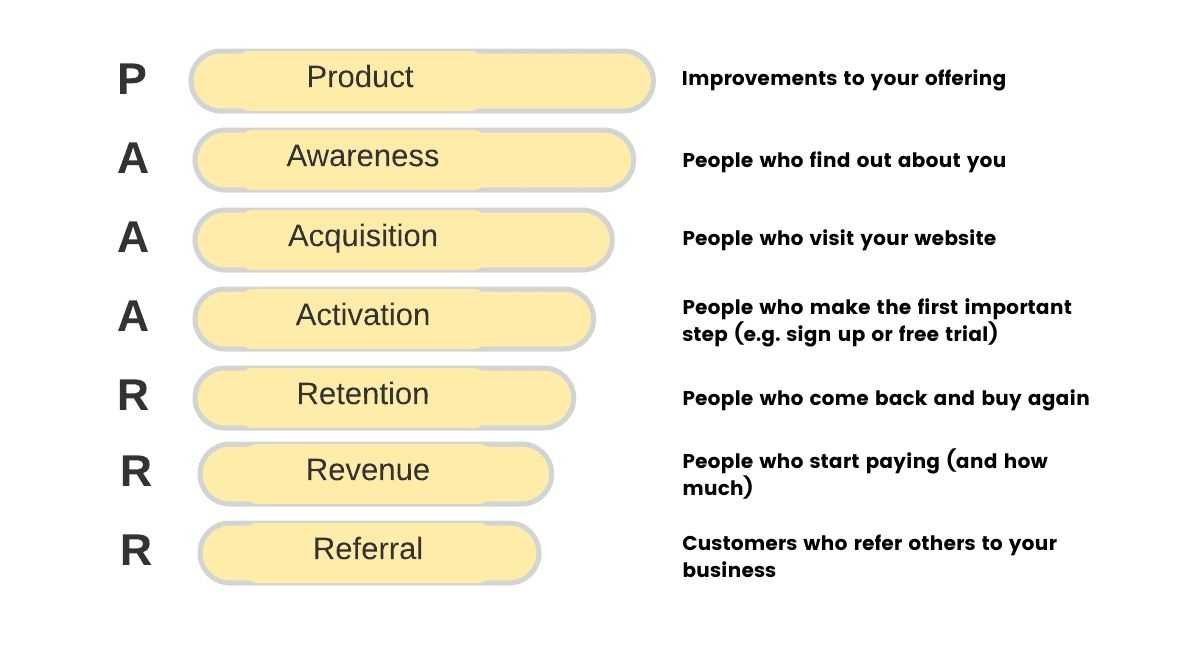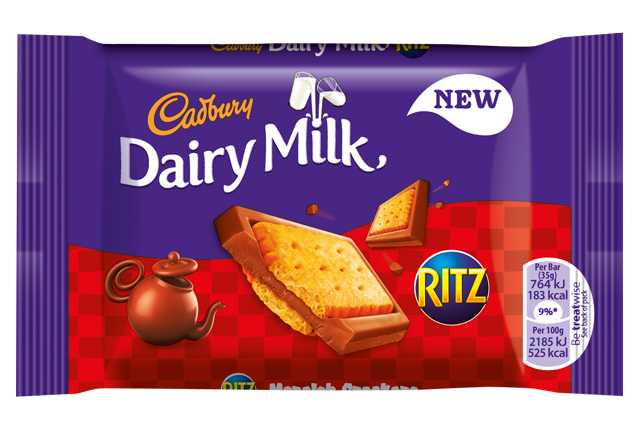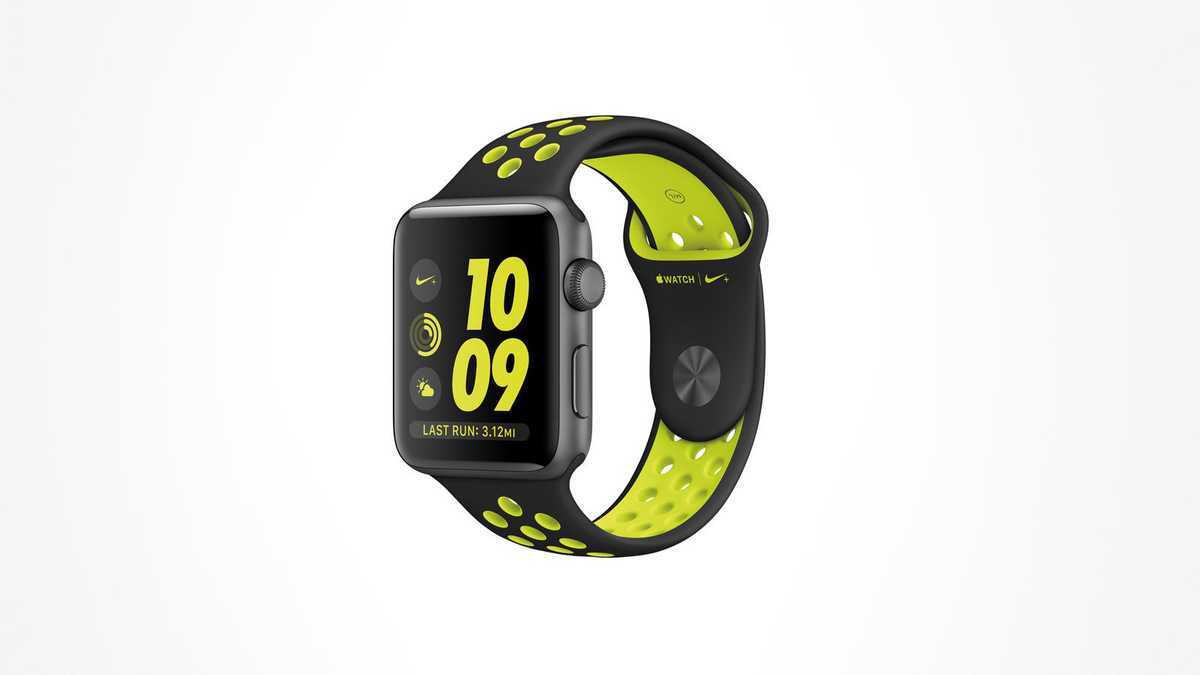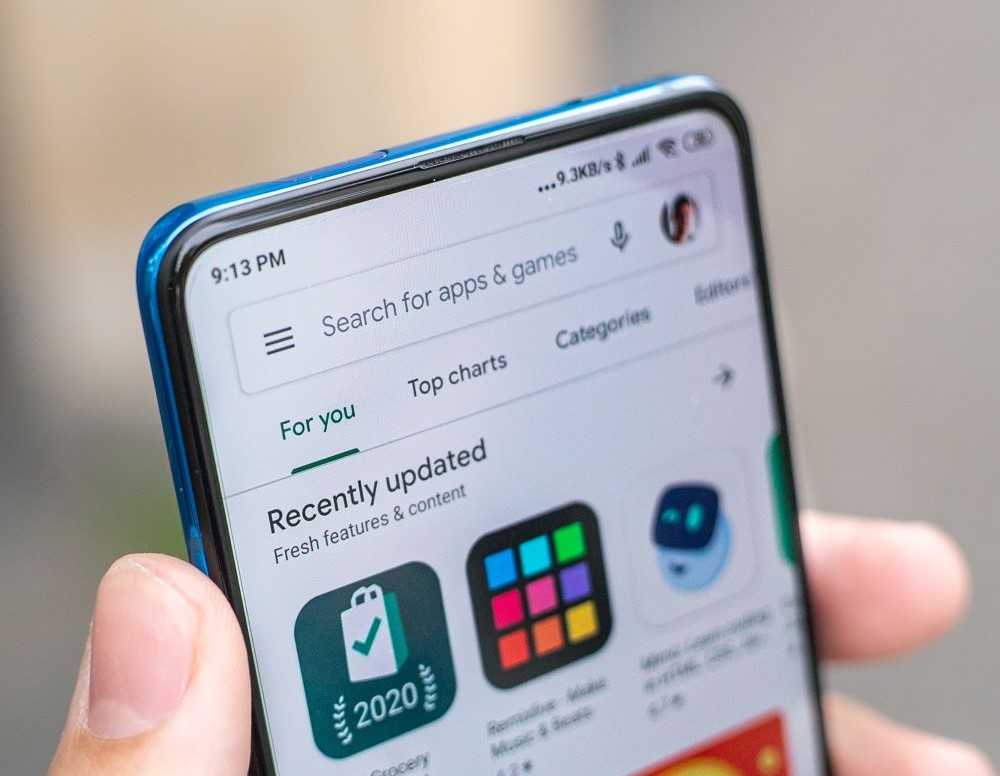What are the 23 types of strategic partnerships?
- Publication date
- Author
- Imogen Beech
- Reading time
- 67 minute read
Take a look at any successful brand and we bet a strategic partnership (or two!) has been key to their success.
Just think of Amazon’s world-famous affiliate program, ‘Amazon Associates’, which has seen several million affiliate publishers promoting products on their marketplace. Or Red Bull’s history-making co-branding partnership with GoPro, which saw some of the most highly-viewed extreme-sport content of all time. Or Uber’s smart technology integration with Spotify to let you plan your music playlist before you enter your ride.
Or Adidas’ joint product partnership with Kanye West to create the ‘Yeezy’. Or the supply chain partnership between McDonald’s and Coca-Cola, its biggest supplier. Or Dropbox’s referral program where partnering with its most loyal customers enabled it to acquire 4 million new users in 16 months.
Or, or, or. We could go on... and we will.
As you can see, there are a ton of high-growth companies putting their focus on strategic partnerships – and that shouldn’t come as a surprise. It’s estimated that partner ecosystems could drive a $60 trillion economy by 2025 (according to McKinsey & Company).
Not only that, but this often-overlooked growth driver has some pretty impressive stats to back it up. When it comes to closing deals alone, Crossbeam’s report on the State of the Partner Ecosystem in 2023 revealed that deals are 53% more likely to close when a partner is involved – and 46% faster! It’s no wonder that 64% of businesses intend to increase their channel marketing budgets in 2023, according to Demand Gen’s 2023 Channel Partner Marketing Benchmark Survey.
In short, if you haven’t yet thought about investing in a partnership program, it’s certainly not to be sniffed at. Here, we attempt to break it all down.
Find thousands of relevant partners (way!) more quickly with our partner intelligence and discovery engine.
When it comes to getting started in strategic partnerships, it can be hard to know where to begin. Every brand is different and there really is no ‘one size fits all’. In some ways, that’s great. It means there are barely any boundaries and the opportunities are there for you to form a unique partnership that really works for you (and your partner!).
But before you start that delicate dance with potential partners, it does help to know what’s out there – what have other companies done? What kinds of partnerships are tried and tested?
To help you get your head around it all, we’ve broken things down into 23 strategic partnership types, split broadly across three main categories:
Just remember that these are by no means cut and dry and there’s a fair bit of overlap between all three of these partnership categories. For instance, if a brand uses its distribution channels to help promote a partner’s products or services, that could be seen as either partnership marketing or a distribution partnership (or both!).
Perhaps even more importantly, each of these strategic partnership types can be adapted, amended and amalgamated to suit your individual needs. There really are no rules!
No matter what types of strategic partnerships you go for, the trick to a long-lasting collaboration is making sure that both companies benefit (more on this in our guide to creating partnerships that are the right fit for your brand). That way, you’ll both be equally invested in the partnership!
That said, this doesn’t necessarily mean you have to benefit in the same way as one another. A carefully thought-out collaboration will often utilise each of your unique skills, experiences and resources to bring one another a diverse range of benefits.
When it comes to value gained, we like to go right back to marketing basics and think of it in the context of the pirate funnel (so called because it’s an acronym for the sound pirates make):

The eagle-eyed amongst you might have noticed that a rogue P has made its way into our version of the funnel. That wasn’t an accident! Our new PAAARRRtnership funnel begins with Product because that’s where everything starts (after all, without a product or service to sell, the rest would be pretty pointless!).
Anyway, the best collaborations will involve partners teaming up to boost one or more of the steps in this funnel, for both brands.
All the partnership types we’ll go on to list here will have the potential to help you and your partner to optimise certain steps in the funnel. However, they won’t all help you to reach the same goals. Similarly, some partnership types will be well-suited to helping you achieve short-term success for your brand (for example through a seasonal partnership), whereas others will be better suited to long-term growth.
This is why the first step to negotiating any kind of partnership should always be to share your goals openly and honestly, and to encourage your partner to do the same thing. That way, you can be sure to select a partnership type and negotiate an agreement that’s designed to bring quantifiable benefits to you both.
Whichever partnership type you pick, any collaboration will be most successful when you involve multiple departments from across both businesses. All too often, partnerships get relegated to one department (such as the marketing department with partnership marketing). But by treating them as a thriving ecosystem with their own unique life cycles, and getting people involved from all areas of your company that the partnership touches (such as finance, business development and operations) right from the beginning, you’ll be able to ensure the partnership makes as big of an impact as possible.
The following types of strategic partnerships fit loosely under the category of partnership marketing. Broadly speaking, this is when two companies collaborate on a strategic marketing campaign to achieve their objectives (usually providing a boost to Awareness, Acquisition or Activation).
While partnership marketing used to be largely focused on traditional affiliate marketing, it’s since evolved into a flourishing partner ecosystem that incorporates media houses, mobile apps, influencers, strategic B2B relationships, charitable causes and much more.
In short, this isn’t just a subcategory of marketing. It is its own marketing channel that could be seen in the same vein as print, email, TV or paid search. Hence why brands that are serious about milking the benefits of this channel will often grow a dedicated partnerships team, as opposed to leaving the job to a head of growth or marketing.
It wouldn’t be an exaggeration to say that we believe partnership marketing is the most underrated way of earning income and creating value, both on and offline. You can check out our selection of the best partner marketing examples to get an idea of the huge range of collaborations that fall under its remit. Or check out the main types below.
In affiliate marketing, the primary company (often referred to as the brand, advertiser, creator, merchant or seller) offers the secondary company (usually known as the affiliate or publisher) a performance-based financial reward in exchange for promotion. This type of partnership is the best-known – and arguably, most popular – form of partnership marketing there is and has been around for almost as long as the internet (read our brief history of affiliate marketing to find out more).
There are many different techniques that affiliates use to promote brands and make money with affiliate marketing. Here are six of the most popular:
Generally, whichever of these methods is used, the partnership centres around an affiliate link or 'tracking link.' Affiliates are given their own unique links so that, when a consumer clicks on it, the brand is able to tell where that consumer has come from. This way, the brand can be sure that the correct affiliate is rewarded for their efforts.
Affiliates come in many different forms, from large, national newspapers to one-man-band review sites and comparison sites. In short, any business or individual that’s in a position to promote another brand’s product on a performance basis could operate as one. However, most will operate within a specific niche. Check out our lists of the best large affiliate websites and the best one-person blogs for more examples.
If you're looking to work with brands on an affiliate marketing basis, our step-by-step guides on how to become an affiliate marketer and how to make money with affiliate marketing will help. Alternatively, if you’re looking to work with an affiliate, there are three key ways in which you can find the right one for you:
Many brands run and market their own in-house affiliate programs where they allow affiliates to choose the campaign type and earn a commission for promoting their products. This solution is particularly popular with big brands like Amazon and eBay because it generally relies on the primary brand having enough reach to attract affiliates organically or through in-house marketing methods (check out our list of the best affiliate programs for some examples).
That said, it can be effective for smaller brands too as there are a number of ways that you can spread the word about your affiliate program (read our step-by-step guide on how to find affiliates to get started). Most brands that choose to run their affiliate programs in-house do so using affiliate link tracking software, which makes it easy for them to manage, track and reward affiliates.
An affiliate network is a third-party site that both brands and affiliates register with in order to find partners for their brand – such as AWIN and Clickbank. Usually, an affiliate network will allow brands to create an affiliate program for their business, find affiliates to work with, and then manage their program all in one place.
This solution can be a great way for brands to get started that are new to affiliate marketing, as it makes things really easy. However, when it comes to affiliate discovery, there are some limitations. For instance, there often won’t be a great deal of variety amongst the affiliates listed on these platforms (the majority tend to be Instagrammers). It can also be difficult for brands to find affiliates who are highly relevant.
Another option is to outsource your affiliate marketing to an agency that manages a portfolio of affiliates. This way, the negotiations, tracking and measuring will all be taken care of for you. Sometimes, affiliate networks will also operate as agencies.
The greatest advantage of affiliate marketing over other types of partnerships is that it’s a form of performance marketing. This means that results can be easily measured and proven, and return on investment (ROI) is easy and accurate to calculate. Better still, the primary brand only has to pay when the affiliate gets results, taking away a lot of the risk.
Exactly how the affiliate gets paid depends on what kind of deal the partners make. The most popular agreements are based on:
Companies may form an agreement based on any one of these measurements, or on combinations of more than one – often referred to as a hybrid deal. It’s worth noting that although hybrid deals can include a fixed fee, the purpose of affiliate marketing is to pay based on performance. So, if a partner asks for a fixed fee alone, this is really just paid marketing as opposed to a partnership.
Although less popular, affiliate partner agreements can also be arranged around other measurements, such as CPM (cost per thousand impressions) and CPC (cost per click). However, this is essentially the same as what Google and Facebook offer on a paid marketing basis, which is hard to beat.
It’s also worth noting that the best deal for a brand will usually be to pay the affiliate based on a measurement as far down the sales funnel as possible, minimising any risk and leakage. For example, if the advertiser pays the affiliate a proportion of each sale, there’ll be no money spent on marketing that doesn’t work. Meanwhile, paying per click is riskier as those that click through may not purchase.
In contrast, the affiliate is likely to want to be paid as close to the start of the sales funnel as possible, as these measurements are most in their control. With this in mind, a successful partnership depends on finding the right balance between the two.
Amazon Associates is one of the largest affiliate marketing programmes. Bloggers and website owners can create their own tracking links and earn referral fees of up to 12% every time a customer clicks through to buy a product.
Affiliate marketing can be very easy but becomes increasingly difficult with more complex integrations and reward structures.
Overlaps with content marketing partnerships, sponsorship, product placement.
Breezy makes it quick and easy to find thousands of relevant affiliates to join your affiliate program.

Content marketing partnerships are another form of partnership marketing intended to promote the primary brand’s products and services. This time though, the aim is to do so through sharing valuable and engaging content with potential customers.
There are a number of ways that brands can collaborate in a strategic content partnership:
By collaborating to create fresh, engaging content, companies are able to utilise one another’s expertise, resources and personnel to keep their customer bases engaged and grow their reach – ultimately meaning a lower cost per acquired customer.
On top of this, brands who collaborate on digital content may be able to help one another with SEO (search engine optimisation) by providing each other with backlinks. Providing a link to a partner company’s website effectively endorses the partner brand’s content and helps the partner to climb higher up on the search engine results pages (SERP). This helps the partner to be found more easily on search engines, ultimately resulting in increased brand awareness.
Brands may choose to work together on the latest industry research, opinion pieces, product reviews… the list is endless! Here are some examples of the kind of content brands can collaborate on:
Content marketing is harder to measure than affiliate marketing because many of its benefits are hidden. That said, there are some aspects that companies can measure, including the number of people who view the content created and, in the case of digital content, its ranking in the SERPs.
It can also be useful to use tracking links so that companies can measure how many readers each partner drove to the content, as well as how many readers clicked through to the partners’ websites. This may start to sound reminiscent of affiliate marketing (and technically, affiliate marketing can be a form of content marketing) but bear in mind that you can’t technically receive SEO benefits from paid links.
It could also be helpful to measure views and engagement on any social media posts intended to publicise the content.
In September 2020, Renault collaborated with The Guardian and Global on a multiplatform content marketing campaign that celebrated the 'joy of firsts.' Across print, video and radio, the partners celebrated a range of UK firsts (such as the first London postbox and the first coffee shop in Oxford) – in order to show how driving an electric Renault ZOE gives you the rush of being behind the wheel for the first time all over again.
Not only did the campaign result in 57% more people considering buying an electric car from Renault. It also resulted in 257% more people saying that Renault ZOE was their favourite brand.
Check out our full list of excellent content marketing partnership examples.
Although content partnerships aren’t particularly difficult to implement, they can be more difficult to track, which can make it hard to set and achieve objectives.
Overlaps with affiliate marketing, content marketing partnerships, co-branding, sponsorship.

In a co-branding partnership, companies combine their branding to leverage one other’s reputations and market reach for the success of both parties.
A co-branded marketing campaign carries the branding of two separate companies, leveraging both their reputations to increase brand awareness and acquisition.
There are two main types of co-branding:
For a co-branding partnership to work, the two companies need to have similar target audiences. That way, the primary brand benefits from getting its products in front of the secondary brand’s audience and vice versa. It’s also important that both brands have a good reputation – you certainly don’t want to co-brand with a company that will bring down your credibility!
A co-branded marketing campaign gets tracked in the same way as you would usually track a solo marketing campaign. So, depending on what kind of campaign it is and what your objectives are, aspects to measure might include:
We can’t talk about co-branding without mentioning Red Bull and GoPro’s famous collaboration on their ‘Stratos’ event in 2012. The campaign involved skydiver Felix Baumgartner jumping from a helium balloon 24 miles above the Earth. Not only did he break three world records and shatter the sound barrier, but he also used a GoPro camera to capture it all. The event drew a huge amount of attention, and since both brands had a similar target audience, proved very successful for both parties.
Check out our full list of fantastic co-branding examples.
Co-branding a marketing campaign is relatively easy to achieve and measure. The difficulty lies in ensuring you choose the right partner – providing you do, your campaign is likely to be more successful than your solo marketing campaigns given the increase in reach, and just as easy to measure.
Overlaps with content marketing partnerships, joint product partnerships.

Comarketing shares a large overlap with co-branding. In comarketing, partner brands team up to promote something in order to maximise the reach and impact of a marketing campaign.
Comarketing is the act of partner brands working together to promote something – which could be anything from a piece of content to a product or event.
While co-branding quite literally refers to the act of including two (or more) companies' branding on something, comarketing refers to the act of jointly promoting it. So, as you can imagine, co-branding and comarketing often go hand-in-hand (and you'll probably hear the two terms used interchangeably, although there is a subtle difference between them!).
Most importantly, a comarketing campaign involves both brands using their respective channels to promote the partners' chosen item (whether that's content, an event, a product or something else). And it also involves both brands benefiting from this promotion, usually in the form of accessing their partner brands' audiences to maximise the impact of the campaign.
A comarketing campaign will often get measured in the same way as you might measure a single marketing campaign. However, usually, the benefit of comarketing (as opposed to solo marketing) is an increase in reach. So, brands will often focus on measurements like clicks (if sharing a blog), registration and attendance stats (if comarketing an event) or simply sales (if comarketing a joint product).
One popular form of comarketing involves brands promoting a free piece of shared content (like an ebook, webinar or template) that sits behind a lead generation form. Brands can use the lead generation form to gain new leads, expand their mailing list or simply fill in data gaps. With that in mind, a comarketing collaboration of this kind is likely to measure its success based on the number of downloads or leads generated.
Inbound marketing and sales software provider, Hubspot, collaborated with social media chatbot platform, Chatfuel, to create and jointly promote a free ebook about how to build a chatbot. However, to download the so-called BotBook, consumers had to chat with a Facebook Messenger bot that captured lead information such as their name, email address, company name and size. In this way, the brands were able to generate new leads, while Chatfuel was also able to give users firsthand experience of its leading chatbot services.
Check out our full list of fantastic comarketing examples.
Comarketing can be as easy or as hard as you want to make it. The easiest kind (hence why we've given it a 2 for difficulty!) is guest blogging (which is also a kind of content marketing partnership). Partners write blog posts to appear on one another’s websites and both brands promote the blogs across their channels.
Overlaps with co-branding, content marketing partnerships, joint product partnerships.

Sponsorship is a popular form of partnership marketing that involves the primary brand linking itself to an aspect of the secondary brand. This is often an event, but could also be a television program or a sporting personality to name just a couple of examples.
Usually, the primary brand supports the secondary brand financially in return for help in raising brand awareness and bettering brand reputation. Popular sponsorship opportunities include:
With any of the above, national and international opportunities are in high demand as they can give brands exposure to millions of potential customers. Brands such as McDonald’s, Pepsi and Coca-Cola all invest billions of pounds in sponsorship every year.
But for some smaller brands, local sponsorship opportunities can be equally as effective. Opportunities cost less and give brands more targeted advertising to local customers. Think local radio stations, farmers’ markets or amateur sports teams.
Sponsorship marketing isn’t easy to track and it can be difficult to quantify your ROI when it comes to these opportunities. The closest you can really get to an effective measurement is recording how many people have been exposed to your branding. For example, if you have a board advertisement at a sports game, how many people attended the game? And how many people watched the game on TV?
Not only that, but sponsorship doesn’t offer a way of implementing a clear call to action. If your focus is conversion, a more easily trackable form of partnership, like affiliate marketing, might be preferable. But if brand awareness is your goal, sponsorship can do wonders.
P&O Cruises was the headline sponsor for the 2023 BAFTA TV awards. As part of this, they ran a ‘P&O Cruises Memorable Moment Award’ – the only award to be voted for by the Great British public.
Check out our full list of sponsorship marketing examples.
While it’s not too hard to find events to sponsor, it’s very difficult to measure the performance of this kind of partnership.
Overlaps with product placement, content marketing partnerships.

Product placement is the act of working with another company (usually in media) to place your product in the view of that company’s followers. This form of partnership is best known in TV and film.
Usually with product placement, the primary brand will pay a fee to have its product or branding included in a piece of entertainment. This can be (and usually is) very subtle, often involving the inclusion of a company’s product or brand as a prop. For example, viewers watching How I Met Your Mother might get a glimpse of a bottle of Coca-Cola inside Ted’s fridge.
However, it can also be more overt, with the product or brand actually being integrated into the script of a program or film. This is known as product integration or brand integration. A cookery show might endorse the use of a certain product for instance, or a TV show might gear a storyline around it.
Companies who are looking for product placement or integration opportunities can consider:
You may have already noted that product placement is very similar to sponsorship. In fact, it’s often seen as a cross between sponsorship and advertising. Nowadays, the lines have become even more blurred, with the growth of social media and celebrity culture leading to the popularity of influencer marketing and celebrity endorsement.
Like with sponsorship, results from product placement can be difficult to track and prove. However, it’s usually possible to see exactly how many people viewed a TV programme or purchased or watched a film, so generally, the best thing you can measure is reach.
Providing you pick the right channel, influencer or celebrity, product placement gets your brand in front of tons of new audiences. And, although it’s difficult to measure, by increasing your reach you’re hopefully going to cause your sales to soar!
An overt (and arguably a little overused) example of product placement is Krispy Kreme’s partnership with the 2017 Power Rangers film. The film is littered with shots and mentions of Krispy Kremes, and the plot even includes a Krispy Kreme shop as a location.
Check out our full list of product placement examples.
Like sponsorship, product placement can be very effective but is difficult to track and measure. On top of this, there are usually fewer opportunities for product placement than there are for sponsorship.
Overlaps with sponsorship, content marketing partnerships.

An incentive marketing partnership is when a company incentivises specific customer behaviour with offers for partner brands. A popular kind of incentive marketing is loyalty marketing, where brands work together to reward (and therefore incentivise) loyalty. But companies might also choose to reward customers who purchase frequently, make high-value purchases or even recommend or promote the brand to their friends and followers, in an attempt to encourage this behaviour.
You’re probably familiar with a lot of in-store loyalty programs – think about the Boots Advantage card scheme for example. Customers earn points by shopping at Boots and then need to return to a Boots store in order to make another purchase and redeem their points!
An incentive marketing partnership works in much the same way. The difference is that instead of customers having to return to the same brand in order to use their reward, the brand teams up with a partner to reward the customer.
For example, a supermarket might give out club card points to customers who make high-value purchases. These customers could then redeem their points with partner brands, such as using their points towards flights with certain airlines.
While the primary brand is able to encourage sought-after customer behaviours such as loyalty, the partner brand is able to get its products in front of new audiences and position its offering in an exclusive way that makes it more attractive.
Some of the rewards that could be offered in a loyalty or incentive marketing partnership include:
Often, brands will reward customers who purchase frequently (usually the basis of a loyalty program) or make high-value purchases. But some brands may prefer to encourage customers to leave a review or even refer a friend. In this way, these partnerships can overlap with referral agreements (which we’ll cover next).
However, there are some key differences between the two. In an incentive marketing partnership, a customer is rewarded using a partner brand’s products. On the other hand, in a referral agreement, the partner’s job is to send the brand leads they would otherwise struggle to reach – they’ll often get rewarded for this, but not necessarily in the same way.
There’s also a major overlap between incentive marketing partnerships and the incentive sites that dominate the traditional affiliate market. Cashback sites (like Quidco and TopCashBack) and coupon sites (like VoucherCodes.co.uk or MyVoucherCodes) make up the largest affiliate types by spend at 27% and 25% respectively.
Just like any other affiliates, these sites promote their partner brands and earn commissions from the sales they make. However, they often pass some of this commission onto the consumer in the form of discounts or cashback, as a way of encouraging the consumer to continue using their site. In a sense then, they’re rewarding consumers who return regularly with offers for partner brands. You see the similarities!
For the primary brand, the main thing to measure will be the customer behaviour they’re trying to incentivise. For example, if you decide to reward high-value purchases through partner offers, you’ll need to measure whether the average purchase value has increased and how much by. Or, if you want to reward customers who purchase frequently, you’ll need to find out whether retention rate has increased.
If instead, you’re the secondary brand whose products are being promoted, the measuring process will look a little different. You’ll want to measure how many leads you receive from the promotion – and the conversion rate on those leads – to find out whether the partnership is worth continuing.
American Express and Amazon have a very popular loyalty marketing partnership whereby American Express gives out Membership Rewards points for every pound that users of its American Express Preferred Rewards Gold Credit Card spend. These points can be redeemed on thousands of Amazon products, bringing Amazon revenue and incentivising consumers to use American Express’ credit card.
Check out our full list of incentive and loyalty marketing examples.

Incentive marketing partnerships are easy to set up and maintain because they are so directly beneficial to both companies. For the brand that’s working to incentivise its customers, these partnerships offer a unique way to tailor customer behaviour in line with business goals.
Overlaps with referral agreements, distribution marketing partnerships.
In a referral agreement, one company agrees to send business to another in return for a reward.
This kind of partnership is particularly useful for small companies as it allows them to fill a gap in the services they offer by referring customers to another business that they trust.
There are a few ways that businesses can work on a referral agreement together.
Let’s imagine that you’re a sole trader who offers web design services. It’s likely that a client who needs a website designing will also be looking to get a new logo. But because you’re only small, that’s not a service you provide.
By teaming up with a logo designer that you can refer your clients to, you can provide them with additional value (as long as the company you team up with provides a high-quality service!). This is likely to improve customer satisfaction and will also help you to compete with larger companies who are likely to offer both services in-house.
At the same time, the logo designer you’ve partnered with will have clients who are looking for web design services. In return for the customers you send them, they can refer these clients to your company. This way, you benefit from gaining clients that you’d otherwise struggle to reach, boosting your acquisition and revenue. Simple!
Sometimes, the lines between a referral agreement and a joint product partnership (which we’ll cover later) can become blurred. Rather than simply passing your client onto your partner, you might find that you can add more value by collaborating with your partner more closely.
Let’s return to our previous example. As a web designer, you might achieve better results by collaborating with your partner on the design of your client’s logo rather than passing your client on and letting them manage the creative process independently. Plus, by managing the process yourself, you’re potentially saving your clients a great deal of time and effort.
In an arrangement like this, you’re effectively adding your partner company’s services to your own, which could be crossing the line into a joint product partnership.
In some cases, the referrer might receive a fee for passing a client onto a partner company instead of receiving the promise of clients in return. When arranged on a commission or performance basis, this works similarly to an affiliate agreement.
One industry that's well-known for operating in this way is real estate. If you make an offer on a house, you'll usually find your estate agent recommends a conveyancing solicitor. Usually, this isn't just to be helpful. Instead, they're likely to receive a fee for each successful referral they pass onto their conveyancing partners.
And it really works! According to Qredible, 30% of home buyers choose to use the conveyancing solicitor referred to them by their estate agent.
Of course, it would simply be counterintuitive to suggest that only partner brands can refer new customers to your business – especially when consumer referral programs yield such great results. According to Extole, customers acquired through referrals have a 37% higher retention rate and are four times more likely to make a purchase!
However, whether or not consumer referrals count as strategic partnerships is debatable. Yes, it’s true that both the consumer and brand gain something from working together, but in most cases, it’s unlikely to be a strategic decision for both sides. That said, there’s no escaping the fact that the line between partner and customer isn’t always clear – especially when it comes to B2B businesses, who might well find their partners and customers are one and the same!
Influencer marketing falls into a number of different partnership categories, including content partnerships and, if the influencer is working on commission, affiliate marketing. However, we've decided to list it under referral marketing, because the benefits influencers can bring to your brand are similar to the benefits you'd get from organic word-of-mouth.
A whopping 49% of consumers now depending on influencer recommendations (according to Digital Marketing Institute). So, it's no surprise that 75% of marketers now use influencers as a marketing tool (or so says Chief Marketer).
To keep up with the demand, there are a whole load of influencer marketing platforms that have sprung up to help brands find the right influencers for them (check out the top ones in our piece about the best influencer marketing platforms). The majority are focused on paid partnerships on Instagram. Read our piece on how paid partnerships on Instagram work to find out more about the pros and cons of this kind of influencer marketing.
The best ways of measuring a referral agreement will depend on what kind of agreement you have in place.
If we're talking about reciprocal referrals, or you're receiving a fee for referring clients to another brand, it's important to measure your customer satisfaction rate.
If your clients have a good experience with your partner brand, you’ll end up with happy customers, which should always be the goal (and may also help with retention and organic word-of-mouth referrals). However, if they have a bad experience with your partner brand, it will reflect badly on you. To measure their experience, you can send out surveys or ask customers to leave a review.
At the same time, it’s important to measure the financial value of your partnership.
For reciprocal referral agreements, you’ll need to measure how many customers you receive from your partner, and their average spend. In an ideal world, you should receive as much business from your partner as you send to them, making it an equal relationship.
In a referral fee agreement, you’ll need to look at ROI – if you’re the one referring customers then this is about the time and resource you spend making those referrals compared to the revenue gained. But if you’re the one paying another brand to refer customers to you, you’ll need to carefully examine your profit – how much do you pay for each referral, and how much do those customers typically end up spending?
To measure all this, you’ll need to set up systems to ascertain where customers have come from, such as tracking links or unique discount codes, and regularly report to your partner.
When you purchase a house, your estate agent is likely to recommend you a conveyancing solicitor. In fact, Qredible reports that 30% of home buyers choose to use a conveyancing solicitor referred to them by their estate agent! Of course, the solicitor can’t very well pass clients onto the estate agent in return, as purchasing a house is a pretty one-way process. So, they'll usually pay the estate agent a referral fee, which can often be in the hundreds of pounds.
Although the most basic referral agreements can be fairly easy to set up and maintain, they require frequent communication with your partner brand, as well as systems to track, measure and report on them.
Overlaps with joint product launches, loyalty marketing, affiliate marketing.
Whether you're looking for referral partners or any other type of strategic partnership, Breezy's got you covered.

A corporate-charity partnership is when a charity and a brand collaborate, to the benefit of both parties.
Usually in a corporate-charity partnership, a brand will support a charity by sharing resources, making a yearly donation or taking part in fundraising efforts. In return, the brand is able to improve its reputation in three key ways:
CSR, also known as corporate citizenship, is a practice that enables a company to be socially accountable to itself, its stakeholders and the public. By partnering with a charity, companies can have a positive impact on society, often attempting to minimise any negative social impact at the same time.
The Cone Communications Millennial Employee Study revealed that 64% of Millennials won’t take a job if their employer doesn’t have a strong CSR policy. With Millennials set to make up 75% of the workforce by 2025, corporate responsibility and company culture clearly go hand in hand.
Many companies choose to associate themselves with a charity for the positive effect it could have on their reputation. After all, according to research by Accenture Strategy, more than six in ten consumers under the age of 30 closely consider a company’s ethical values before buying its products.
One big criticism of business-charity partnerships is that they’re not geared up around creating impact. Unlike trusts, foundations and philanthropists, brands don’t usually give altruistically. Instead, 91% of companies cite brand reputation as their primary motivation, according to NPC. And yet many charity partnerships come and go without raising any awareness at all.
Although it isn’t done enough, there are plenty of ways to make a charity partnership more impactful for both parties. For example, a charity and company could run joint campaigns together, which could take the form of exhibitions, awards ceremonies, raffle prizes… the possibilities are endless!
In fact, any of the types of partnership we’ve covered up until now could take place between a charity and a company, in order to benefit both parties in much more long-lasting and impactful ways than simply giving or accepting a donation.
Charity partnerships are very difficult to quantify given that the primary motivation for companies is reputation. And of course, reputation is near-on impossible to measure!
Similarly, the impact of the partnership can be difficult to measure for the charity. Although it’s fairly easy to measure the impact that a financial donation makes, support from voluntary work and resources can be harder to track. This is particularly the case given that companies don’t usually specialise in the charitable area they’re giving to and so are often unaware of the real needs of the charity.
Collaborating to create more impactful partnerships in the ways we’ve mentioned above would benefit both charities and corporations by better enabling them to measure the impact of their collaborations.
In 2020, Starbucks launched a campaign called #WhatsYourName in collaboration with Mermaids – a charity supporting gender-diverse children, young people and their families. The campaign launched with an ad showing a member of the transgender community trialling their chosen name at a Starbucks store, helping to raise awareness of gender diversity and winning Channel 4’s Diversity In Advertising Award in the process.
The partners worked together to ensure that members of the transgender community were authentically represented in the campaign and raised money for Mermaids at the same time by selling mermaid-shaped cookies.
Check out our full list of charity partnerships examples.
A charity partnership is easy to achieve for brands, as there will always be charities in need of support. However, the difficulty lies in executing the partnership in a way that helps the brand to achieve its objectives (usually increasing brand awareness and bettering its reputation).
Overlaps with co-branding, sponsorship.

Distribution partnerships are a common form of strategic partnership that we all see on a near-daily basis. They occur when one brand agrees to use its distribution channels for the benefit of another.
Often, this will involve the secondary brand using its distribution channels to promote the primary brand’s products or services. Of course, this shares a large overlap with partnership marketing, as promoting another brand’s products could just as easily be seen as a strategic marketing campaign. However, distribution partnerships can also involve the secondary brand using its distribution channels to distribute or sell another brand’s products.
Usually with distribution marketing partnerships, the two brands benefit in different ways.
The primary company gets to put its marketing materials or product into the hands of potential customers who it might otherwise struggle to reach, boosting brand awareness and activation. Meanwhile, the secondary company can benefit in a number of ways depending on the agreement—from receiving a fee for distributing flyers, to making a profit by reselling the primary brand's products, to offsetting acquisition costs by bundling another company’s products in with their own.
Distribution marketing can take place both online and offline, and both have their pros and cons. For the primary brand, an offline partnership might make it easier to stand out from the crowd in a world that’s moving more and more online. However, online marketing makes it generally easier to track a distribution partnership’s performance.
In this section, we’ll continue to list the various types of strategic partnerships, focusing on those that fall under the distribution partnership category.
Cross-promotion, also known as cross-marketing, is when customers of one brand are targeted with the promotion of another.
Cross-promotion can take many different forms. The most obvious is probably the secondary brand distributing leaflets that promote the primary brand’s products to its customers – perhaps within the packaging of a mail-order item, or in a physical shop.
However, cross-promotion can also occur online. We’re sure you’ve probably been shown complementary products from different brands as you’ve gone to checkout, received an e-shot from one brand promoting another, or even come across a cross-promotion on social media.
Often, one brand will give its customers a promo code or coupon to use with a partner brand. In this way, the promise of an ‘exclusive’ offer can boost uptake and encourage the customers of one brand to give a partner brand a try.
Types of cross-promotion can include:
One of the things that makes cross-promotion so successful is that the primary brand’s marketing materials or promotions are shared with warm leads. In other words, the secondary brand has already built a trusted relationship with its customers (customers that should fit a partner brand’s target market). When the brand promotes a partner, they’re effectively endorsing it – making the promotion much more impactful in a world where brands are competing tooth and nail for a consumer’s attention.
Essentially, in a competitive market where cold sales calls and emails abound, having a mutual contact introduce another company turns a ‘cold’ lead into a ‘warm’ one.
As we’ve touched upon already, it’s much easier to measure a distribution partnership that takes place online than one that takes place offline. That’s because the use of tracking links online makes it really easy to see where consumers have come from and how they behave in the lead-up to becoming a customer (or else dropping out of the sales funnel). Brands can directly see how many page views, sessions and sales are generated from the cross-promotional activity.
Understandably, the same quantity and quality of data isn’t available for offline activities. However, using an exclusive promo code or voucher for an offline campaign that customers have to enter upon purchasing gives you a way to track where customers have come from and therefore link their online behaviour to your distribution marketing partnership.
ROI is often assessed by working out how much money was spent on a cross-promotional activity, and then working out how much was generated in sales as a result of the partnership. However, it’s important to note that ROI isn’t just about generating revenue. Longer-term goals such as increased brand awareness can also be achieved through cross-promotion, which can be just as valuable although harder to accurately measure and quantify.
Five Star Days, a company specialising in gift experiences, teamed up with greeting card brand, The Proper Mail Company. On opening a Proper Mail Company greeting card to write a message to a loved one, consumers find an insert from Five Star Days. The insert encourages them to add an experience as a gift to ‘make it a day to remember’ – with a discount code thrown in to help incentivise them.
The collaboration makes perfect sense, as consumers sending a greeting card are likely to also be looking for a gift to give – they may be stuck for ideas, or think they’ve left it too last-minute. The insert includes a little slip that the gift giver can fill in and leave inside the card for the recipient to find, revealing the gift experience that’s on its way. Now that’s a clever cross-promotion in our books!
Cross-promotion isn’t particularly hard to do well – if you’re looking for a partner to promote your brand to its customer base, just make sure that its customers fit your target market.
As long as you can make potential partner brands an attractive offer (whether that’s rewarding them financially or through reciprocal cross-promotion) and you can demonstrate that your brand is of value to its customer base, it shouldn’t be difficult to find a partner that’s willing to team up with you. The difficulty lies in measuring offline cross-promotional activities to assess their worth, particularly those that don’t involve discount codes or vouchers.
Overlaps with referral marketing, affiliate marketing, bundling.

Bundling is when one brand combines its product offering with another brand’s products.
Bundling can look very different depending on the brands involved, their goals and the agreement reached. However, there are two main types of bunding.
The secondary company might give the primary company’s product away for free along with its own product.
The primary brand benefits from getting its product into the hands of consumers that it might otherwise struggle to reach, with the goal of getting the consumer to try the product and like it enough to make a purchase. This is especially useful for newer brands that want to build up their customer base quickly, as well as for brands that sell consumables.
For instance, let’s say that the primary brand sells cosmetics. By getting the secondary brand to distribute free samples to its customer base, the primary brand will get its product trialled by numerous potential new customers. If they enjoy using it, the hope is that these consumers will then go on to buy the product from the primary brand again and again.
On the other hand, the secondary brand will often get rewarded financially for distributing the product to its client base, in the same way as it would if it was carrying out a simple cross-promotion with leaflets or flyers. Alternatively, it might benefit from gaining an incentive for its customers, as the free product from a partner brand may well be appealing enough to help boost sales!
Another way that bundling can work is by offering the consumer products from both partner brands for a fixed price, known as ‘hard bundling.’
This is quite common when it comes to technology or software as often, solutions from different brands complement one another and provide a stronger offering when sold together as a package or set. In this case, the bundle might be available to buy from one of the partner brands, both partner brands, or a third party such as a department store.
Subscription boxes are another common form of hard bundling. For example, Birchbox collates five beauty products from a range of brands each month, and sends them to customers as one through its monthly subscription boxes.
Again, the idea is that by being sold together, these products from different brands have more value than they do alone.
Bundling can also involve the primary brand’s product being promoted within the secondary brand’s product or offering.
For example, the secondary brand may say that customers who buy their product will be able to get a special offer with the primary brand – such as a free month’s subscription or a discount on a product.
This is an example of soft bundling, as although the products are being marketed together, they have to be bought separately.
The secondary brand may benefit monetarily, but most often they’ll benefit from incentivising their customers to purchase their product with the promise of a discount for their partner brand – this has a strong overlap with incentive marketing partnerships, but in soft bundling, the two products usually complement and add value to one another.
The primary brand is also able to promote its product and increase acquisition and activation.
One great example is Y Combinator and WeWork. They teamed up on a bundling agreement where Y Combinator alumni were offered a discounted rate for WeWork facilities globally. The WeWork discount was a valuable addition to Y Combinator’s alumni network, helping the funding program for entrepreneurs to attract high-quality applications. At the same time, WeWork benefitted from leveraging Y Combinator’s pool of alumni who fit WeWork’s target audience perfectly.
That depends on the kind of bundling undertaken and the goals of the companies involved.
If brands have collaborated to create a joint offering that they hope will improve the value of their individual offerings, it can be useful to measure the number of sales of the bundle they’ve created, before comparing this to the number of sales that typically are achieved of the products when sold alone. This way, brands can see how much additional value the bundle creates to customers. Sending out surveys to measure consumer satisfaction can also be useful.
If brands have collaborated on a soft bundle and buying a product from one brand comes with a discount for another that has to be activated separately, then measuring takeup rate is also important. This will help you to understand how valuable the offer is perceived to be by consumers.
Mobile network provider EE gives its new users six months of free Apple Music. EE claims that the collaboration has improved its net promoter score by a huge four points. The collaboration also has a proposition takeup rate that’s 45% higher than what was forecast.
We’ve given bundling a 7 for difficulty because hard bundling involves brands finding ways to sell their products together as a single offering. Depending on who actually sells the bundle (one of the partner brands or a third-party retailer), this might mean syncing up systems, sharing reporting and ensuring that a proportion of each sale can be accurately attributed and paid to each partner.
Soft bundling is typically less involved, as the consumer will need to activate each part of the bundle with the brands individually. In this case, it’s important for brands to come up with a solid way of tracking consumer actions, to help them understand what actions consumers have taken across both partner brands. This can be as simple as sharing tracking links and giving consumers a special code to enter on a partner brand’s site after making the initial purchase.
Overlaps with loyalty marketing, referral agreements, co-branding.

Reselling is when a reseller buys a product and then sells it on to someone else after marking up the price.
Reselling in e-commerce is exactly what it sounds like. One brand buys a product and then, quite literally, resells it to someone else.
A reseller is basically the middleman between the manufacturer and the end consumer. In fact, sometimes there can be multiple resellers involved before a product reaches the end customer.
Resellers can be:
Resellers can also be average consumers who decide to 'flip' an item they've previously bought using sites like Gumtree or Facebook marketplace.
For a manufacturer, reselling means they don’t have to put any time, effort or resources into marketing their product to the end consumer. Instead, they can focus on doing what they do best, which is actually making the product. In this way, reselling can be quite similar to outsourcing, where a brand delegates another brand to carry out certain operations for it!
The manufacturer also benefits from being able to sell their products in bulk, as resellers will often buy large quantities at a time. This is in contrast to the end consumer, who’ll usually only buy one or two of each item!
Meanwhile, the reseller is able to make money without having to come up with the idea for a new product. And importantly, without having to spend time, money and resources designing and manufacturing a product themselves – not dissimilar to a supply chain partnership, where a brand outsources the manufacturing of a product to another.
Resellers are often also able to offer more choice to their customers than they could if they were only selling items they made themselves. For instance, they’ll probably sell a range of products from several brands, which could make their offering more appealing.
Reselling can generally be measured using your average business KPIs, such as ROI, number of sales, number of new customers, average value of sales and so on. If you’re the manufacturer, you’ll probably be concerned with the quantity of items being ordered by your partners, and the profit you make from each order after manufacturing costs are taken into account.
If you’re the reseller, you’ll similarly want to be looking at the profit you make on each item, as part of calculating your ROI. However, you should also look at things like which items are the most popular and which generate the most return business, to see which of your partners are generating you with the best business growth.
TK Maxx is a retailer that stocks discounted or surplus items from top brands and designers. It passes some of the savings onto its customers, making them an appealing option for consumers who want to buy from high-end brands but can’t usually afford to.
Reselling may be super effective, but it’s not super difficult to get started or to do well! The important thing as a reseller is to focus on why a consumer should buy a product from you specifically, as opposed to another reseller. What can you bring to the table? It might be a nice shopping environment, easy to find products that are centred around a specific theme or niche… you name it.
As the manufacturer, the important thing is to remember who you’re selling to. Instead of selling your product to the end consumer, your customers are people who want to make a profit from your product. So, focus on how you can help them achieve their goals.
Overlaps with licensing, co-selling, supply chain partnerships, outsourcing.

In a co-selling partnership, the sales teams from partner companies work together to sell a better solution to a customer. Perhaps unsurprisingly, this can also be known as ‘solution selling.’
Co-selling involves two (or more) sales reps or teams from different brands working together, in order to better sell solutions to the end customer. In this way, experts from both partner brands are able to combine their skills and expertise to sell more effectively.
Often, brands will sell their individual products alongside one another to make them look more appealing to a shared consumer. But co-selling can also involve brands from different parts of a supply chain combining their expertise in order to sell a single product more effectively to the end consumer.
Either way, in a co-selling partnership, brands need to be highly engaged with one another throughout the sales process, working in tandem to hone their go-to-market strategies and messaging.
Here’s the lowdown on the two main types of co-selling:
Co-selling in a tech or integration partnership usually involves two sales reps from partner companies working together to sell their individual softwares to the same customer at the same time. The idea is that the two softwares should complement each other, so that selling them together makes for a more attractive offering to the consumer.
In some ways, this is similar to bundling. However, with co-selling, the key is that sales teams have to work together to sell their solution, helping to improve conversion rates. By both playing a part in the sales process, both brands are also able to better control how their product is being presented and sell it as effectively as possible (after all, you know your product best!).
In a channel partnership, co-selling tends to involve companies from different parts of the supply chain – often the vendor and reseller – working together to sell to the customer. Sales teams from both companies combine their knowledge and expertise to better pitch a solution to the customer.
The idea is that while the vendor knows the product best, the reseller knows the customer best. So, by working together, they can sell more effectively.
Conversion rate and transaction value are two useful partnership KPIs when it comes to measuring co-selling partnerships – especially when compared to the conversion rate and transaction value achieved when selling solo.
Of course, profit will be another useful measure of a partnership’s success. In fact, a study by Concur found that 77% of companies that take part in co-selling partnerships have seen an increase in their profits since adopting this model, whether directly or indirectly.
Some businesses, including Microsoft and Hubspot, have actually introduced co-selling programs where they partner with thousands of businesses to pitch solutions that are built on top of their software.
We’ve given co-selling partnerships a difficulty score of 6 out of 10. Not because they have to be complicated or time-consuming, but because they require two teams to work together seamlessly, aligning their methods and agreeing on who’s going to take over when. As long as you and your partner see eye to eye and are willing to communicate regularly and effectively, co-selling partnerships should be a piece of cake!
Overlaps with supply chain partnerships, lead account mapping, comarketing.

Lead account mapping is when partner companies share their data on leads for the benefit of them both.
In a lead account mapping partnership, brands usually form a list of their customers and potential customers and then cross-reference this list with their partner’s. Where there are overlaps, companies can share more information on these leads and decide on a strategy for how they can use this information for their benefit.
There are a number of different ways that brands might benefit from the shared information, depending on where their overlaps lie. For instance, if two brands find they have many of the same customers, they might team up to create tech integrations that can improve the experience of customers who use both products. Or, they might decide to work together on a case study to document a customer’s experience of successfully utilising both products in tandem.
However, one of the most common ways that the data from lead account mapping is utilised is through warm introductions – especially in B2B. Let’s say that a consumer is a prospect for one brand but a customer for another. The latter brand might facilitate an introduction to their partner.
In a world where cold sales calls and emails are common, having a mutual contact introduce another company turns a ‘cold’ lead into a ‘warm’ one and makes them easier to convert.
Alternatively, if a consumer is marked as a prospect for both partner brands, partners might choose to use that information to their advantage by pooling their resources and approaching them jointly as part of a co-selling agreement.
The sky really is the limit! Just make sure that if you’re considering lead account mapping, any partners you collaborate with share a similar audience to yours. Otherwise, you might not find many overlaps and even if you do, they’re unlikely to be relevant.
That depends on how you decide to make use of the shared opportunities you identify! If your goal is to expand your audience, you might choose to measure the number of new leads that you get out of a lead account mapping partnership. Or, if your goal is to obtain new clients, you might decide to measure the number of warm introductions facilitated by your partner, and their conversion rate. It all depends on your goals!
We mentioned Microsoft’s co-seller program in our co-selling section. But we’re going to mention it again here because guess what? Their program begins by using lead account mapping to identify qualified leads among Microsoft and its partners’ customers. As a co-selling partner of Microsoft, you’ll then share the lead between you so that you can work together to pitch them a solution.
Lead account mapping isn’t challenging in itself, but it can result in some difficult questions over which brand gets to actually receive the other brand’s information and do the cross-referencing. Many brands are reluctant to hand over all their secrets to a partner!
However, new solutions are cropping up to make lead account mapping easier, like Crossbeam. You and your partner both provide the tool with your target list, and Crossbeam automatically identifies new ecosystem qualified leads (EQLs). In this way, you can both remain equal in the partnership!
Overlaps with co-selling, cross-promotion.

A licensing arrangement is when a company retains ownership of its intellectual property but allows another company to use it.
There are lots of different ways in which the primary brand might let another company use its intellectual property. For example, it might give another company permission to manufacture its products, sell its products (which overlaps with reselling) or use its name and logo.
Here are some of the main types of licensing you might come across:
A product licensing agreement is when the licensor gives the licensee permission to manufacture and sell one or more of its products within a specific market area. The licensee usually agrees to pay royalty fees to the owner of the intellectual property.
For the licensee, this form of channel partnership can be a really good way to sell a product that’s been proven to work, with the experience and knowledge of the business that originally developed it – especially because this business will usually be a larger and bigger company with more resources and capabilities. This kind of arrangement enables the licensee to benefit from the experience and insight that’s already been gained from selling the product to other markets.
Usually, the licensee only has to start paying royalties when they start making sales. So, it won’t have to face large losses if the product isn’t successful in its market area.
White labelling is another kind of product licensing. Here, the licensor removes its brand and logo from a product and allows the licensee to add its own branding instead.
For example, if you go to the supermarket Waitrose, you’re likely to see all kinds of products in their ‘Essential Waitrose’ range. But there’s no way they’re going to be producing all these products themselves. Instead, other companies will be willingly branding their products with Waitrose’s packaging.
You may even see the same product just a couple of shelves down branded completely differently!
If you’ve built a successful name for your brand, you may allow another company to use your name and brand image alongside your product, known as brand licensing. Or, you may even allow them to develop their own related product, using your name to sell it.
Depending on the arrangement, the licensee could adopt the licensor’s:
However, be careful who you license your brand to – if your logo appears on a low-quality product, you’re likely to harm your brand’s reputation.
On the flip side, if you’re thinking about obtaining a licence to use another brand’s assets, consider whether this brand’s reputation will help you to increase acquisition and activation amongst your target audience. There’s no point in teaming up with a brand that sells DIY products if your target audience is children!
Franchising is a very popular form of licensing agreement where the licensor (known as the franchisor in this case!) gives the franchisee permission to use its successful business model and brand.
The franchisee puts up the initial capital for the business, helps to promote the brand and pays a (usually monthly) fee. In return, the franchisor offers support that usually comes in the form of training, marketing resources and more.
The franchisor benefits from scaling its business and accessing new markets, as well as generating revenue from the franchise fees it receives. Similarly to product licensing, the franchisee benefits from being able to use a business model that’s been proven to work, with support from the people who developed it. The franchisee also benefits from being able to use a recognised name, logo and brand to increase awareness and acquisition in its market area.
When it comes to licensing agreements, what you measure will depend on what the licence is for. If you have a licensing agreement that allows you to manufacture another brand’s product, you’ll need to measure sales metrics related to that product.
Equally, if you’re selling a new product using the primary brand’s name and logo (a form of brand licensing), try to measure how much more revenue you’ve made by branding the product in this way compared to similar product ranges without the branding.
Ultimately, you’ll need to measure ROI to assess whether your licensing agreement is worth it.
The Walt Disney Company is the world’s largest licensor – just think of the sheer number of toys and clothing collections that you come across every day featuring Disney characters! Gucci is just one designer that has a licensing agreement with Disney, with its Donald Duck edition clothing and accessories.
Although licensing agreements can look fairly complicated legally, they’re often a successful way of fast-tracking results for both the licensor and licensee. Licensing enables the licensor to enter new markets without having to do the legwork itself. At the same time, it enables the licensee to earn an income from intellectual property that’s already been proven to work, which can be particularly useful for small startups that haven’t yet had a chance to build a name for themselves.
Overlaps with reselling, joint product partnerships, outsourcing.

A supply chain partnership is when two or more companies from different parts of a supply chain work together to meet shared objectives.
A supply chain partnership involves brands from the same supply chain working together to iron out problems and bring greater benefits to all parties.
For example, brands might team up to reduce costs, improve forecasting, reduce a product’s carbon footprint, sell more effectively or improve the quality of a product they’re manufacturing.
In a supply chain, brands become reliant on one other in order to hit their own individual KPIs and maintain the health of their businesses. By collaborating more closely in a supply chain partnership, brands can gain more control and oversight, allowing them to have a say over processes that will affect them but aren’t necessarily their responsibility.
In many ways, a supply chain partnership can look similar to an outsourcing partnership – after all, in a supply chain, one brand is essentially outsourcing the manufacturing or selling of a product to another (or to many brands). However, in order for the relationship between businesses in a supply chain to count as a true supply chain partnership, the relationship has to be more than just a transactional one where one business pays another to fulfil a service.
Instead, brands will usually communicate regularly and evaluate how their partnership is working. They should also have a shared vision and strategy.
Supply chain partners will often look for terms to do with exclusivity, shared risks, long-term commitment or the sharing of technical expertise. These are all factors that cement brands as partners rather than simply clients.
Some of the most prevalent supply chain partnerships can be found in the film industry, with films often made using a supply chain method. That’s why there’s usually more than one company named at the beginning of a movie! Usually, a relatively small production house will deal with the filming and post-production, while a much larger studio will deal with the financing, marketing and distribution – think of Bad Robot’s partnership with WarnerMedia.
Another sector in which supply chain partnerships are common is the technology sector. For example, Intel makes processors for many different computer manufacturers.
That depends on your goals and why you decided to form the partnership in the first place! For instance, if your shared goals are to reduce costs or to improve efficiency in areas of the supply chain, this is what you’ll need to monitor and measure. All brands taking part in a supply chain will also need to measure ROI.
That said, the primary brand will probably also need to measure how much it costs to outsource the manufacturing of a product versus how much it might cost them to manufacture it themselves. It’ll also be important to measure customer satisfaction, to make sure that they’re not sacrificing on quality by outsourcing to a supplier whose own goals are likely to be to keep manufacturing costs down.
Toyota makes engines for many Lotus cars, enabling Lotus to sell some cars for less and allowing other Lotus cars to pass strict emission laws in the US.
Check out our full list of supply chain examples.
Supply chain partnerships aren’t difficult to put in place, but they are more difficult to get right. According to Dr Andrew S Humphries, an expert and thought leader in performance improvement in collaborative business relationships:
‘Supply chain partnerships run into problems because, on the supplier’s side, the measures of success focus on time, cost, and quality, whereas [the primary company’s] perspective likely focuses on sales and revenue. A supply chain partnership only works if each party involved can meet with end customers’ expectations for quality and price while remaining individually profitable.’
So, always be clear on what you hope to gain from a supply chain partnership – if you’re the primary brand, it may turn out that although outsourcing the manufacturing of a product is cheaper, you end up sacrificing on quality.
Overlaps with outsourcing, reselling, co-selling.

Shop sharing is when one brand makes room in its shop for another brand, in order to provide additional value to its customers.
Costa Coffee, Starbucks and Caffè Nero are all examples of coffee shops that can often be found within department stores and bookstores. This is perhaps the most obvious form of shop sharing and can be very effective. By teaming up, the cafes receive a spot with guaranteed footfall, while the store managers are able to meet customer needs and extend the duration of their customers’ shopping trips at the same time.
Other forms of shop sharing include dedicating a desk to another brand inside your shop – like John Lewis might do with various cosmetic brands – or providing a dedicated area where another brand could set up a promotional stall to sell their own products.
Alternatively, smaller brands might collaborate to rent a pop-up shop. This way, they’re able to save money by splitting the costs of renting a space, at the same time as increasing brand awareness by reaching one other’s brand audiences.
Although shop sharing might immediately call physical shops to mind, it’s also possible to shop share online. If you’re looking for ways to do so, consider:
By shop sharing, partner companies are demonstrating to consumers that they trust and endorse one another, which can go a long way in giving consumers the confidence to purchase.
There can be many different goals when it comes to shop sharing, from saving on rental costs to providing added value to customers or acquiring new customers. As such, there are many different ways to measure whether you’ve achieved your objectives.
If one of your objectives is increasing brand awareness and acquiring new customers, you’ll want to measure the number of new leads obtained and the conversion rate. Conversion rate is particularly important because if your partner brand’s target audience doesn’t align with yours, you’re going to be unlikely to be able to turn them into customers. Ultimately, it’s all about ascertaining ROI, which should be fairly easy to measure.
A collaboration between Cineworld and Starbucks has resulted in there being Starbucks cafes in 30 Cineworld cinemas in the UK. Marketed as a place to pick up a coffee to take into a movie or to catch up with friends after a film, it’s clear that Starbucks has been able to fill a gap for Cineworld, helping to add value to movie-goers.
As long as both brands are clear about their goals, shop sharing can be a great way to boost brand awareness, acquisition and revenue. However, it requires more investment than other forms of partnership, particularly offline. Therefore, it carries with it a higher risk.
Overlaps with bundling, reselling, co-branding.

A product partnership is when companies collaborate to improve their offering.
Sitting right at the top of our PAAARRRtnership funnel (which stands for Product, Awareness, Acquisition, Activation, Retention, Revenue and Referral), partnerships that centre around optimising Product can help you to unlock all sorts of other strategic partnership benefits from further down the funnel.
For instance, by improving your product, you’ll be more likely to retain customers (especially if you’re a subscription business). You’ll also be more likely to benefit from organic referrals as customers who genuinely believe in your product recommend it to their friends. And of course, you’re likely to acquire more new customers, as the improvements to your product might appeal to individuals who didn’t previously find enough value in it.
So, it really does all stem from here!
You may also hear these partnerships called technology partnerships. This is because these kinds of collaborations are particularly common in the tech industry. However, we prefer the term ‘product partnerships’ as these partnerships don’t actually have to be centred around tech at all. In fact, they don’t even need to be centred around a specific product, as brands can collaborate to improve a service too.
Ultimately, just like the other types of strategic partnerships we’ve listed so far, product partnerships can come in many different forms. Just remember that there’s no one size fits all and not all collaborations will fit neatly in one box.
Book a demo for Breezy to see how we can supercharge your partner discovery.
In a joint product partnership, brands collaborate to either create a new product or combine their expertise to improve an existing one.
In the case of a small and large business teaming up together…
In the case of two larger businesses teaming up together:
Often, a joint product partnership involves a large tech company, like Google or Microsoft, teaming up with a small tech company or startup that can fill a gap for them.
For the small company, teaming up with one of these tech giants can be life-changing. Being associated with such a reputable brand can give them a mark of quality and trust, as well as giving them access to media coverage, personnel and other resources. But there’s a lot in it for the big guys too.
Generally, large companies have a lot of processes and protocols in place that prevent them from being able to move as fast as smaller, more agile companies. And yet, in a fast-moving marketplace, the need to act quickly to launch new products and improvements is urgent. So, by collaborating with a smaller startup, they’re able to stay ahead of the competition.
Alternatively, two well-known brands might choose to work together on a product, leveraging both their reputations and expertise to make the product launch as powerful as possible. For instance, Deliveroo and Snog released (and delivered) Oyster Fro-Yo for Valentine’s Day in 2019 – a seasonal partnership example that centred around creating a new (albeit short-lived) product. In this way, joint product partnerships can overlap with partner marketing, as brands may view the launch of a new product as a marketing activity rather than a long-term extension to their services.
Joint product partnerships are particularly common when it comes to highly technical innovations that require a lot of different complex parts to work together seamlessly. For instance, self-driving cars, eVTOLs and space travel are three industries that are riddled with joint product partnerships. By teaming up together, companies can better manage the costs involved in launching groundbreaking concepts, and combine their expertise to move more quickly. Read our piece on partnerships that are changing the future of business to learn more.
Like any new product launch, companies collaborating on a joint product partnership will want to measure stock turnover rate and ROI. Because joint product partnerships often require a huge amount of time and input from both companies across multiple departments, they’re not a cheap undertaking and so it’s important to measure any gains against the (often large) upfront cost – both financially and in terms of time and resources.
The Apple Watch Nike is a collaboration between tech giant Apple and sportswear brand Nike. The partners pair all the benefits of an Apple Watch with Nike's signature sporty aesthetic to create a product loved by sports nuts and technology lovers alike.
Check out our full list of product partnership examples.
Depending on the type of joint product partnership you go for, they can require a lot of time and collaboration between both brands. This makes them one of the most costly partnership types. That said, when done right, they’re amongst the most effective for brand awareness and increasing revenue.
Overlaps with co-branding, outsourcing, licensing agreements.

A product integration partnership is when SaaS businesses connect their products by building an app between their systems.
Usually, integration partnerships take place between SaaS businesses that share many of the same users.
When businesses realise that their technologies are frequently being used alongside one another, they might choose to collaborate to get their products working together more seamlessly. Often, this is to do with data sharing. Partners will often build an app between their systems to allow their mutual customers to easily access, share of move data between their technologies.
By improving customer experience in this way, brands are able to increase the value of their individual products. This, in turn, can help them to improve retention, obtain better customer reviews, and even appeal to more new customers.
An integration partnership could also allow you to add new features to your product’s offering without building a new solution from scratch (which could be time-consuming and expensive). In this case, you’ll need to be able to offer your partner brand tangible benefits in return – whether that’s features that they can add to their product in return, or a decent fee.
The biggest measure of success when it comes to an integration partnership is customer satisfaction. If you’re driving a positive impact for your end customer, this should be positively impacting your bottom line too – whether that’s from helping you to attract new customers or aiding retention.
If you’re embarking on an integration partnership in order to add new features to your product, you’ll also want to consider whether you’re gaining more from an integration than you are by building that feature from scratch yourself – or outsourcing somebody to build it for you. Sometimes, you might find that building your own solution costs more in the short term but will actually save you money in the long run.
Music-streaming platform Spotify and e-commerce platform Shopify integrated their products to allow artists to sell merchandise via their Spotify profiles. This allowed artists to boost sales of their merchandise by displaying it to fans in a new setting. But it was also a positive move for fans, who can now listen to their favourite artist’s music and buy their merch in one place.
Read more in our selection of killer B2B partnership examples.
Integration partnerships can be as easy or as challenging as you want to make them. Lots of SaaS businesses create products that are deliberately intended to be integrated into other solutions. For instance, if you run an online shop, you might want to make it easier for customers to pay by integrating with a digital wallet such as Google Pay or Apple Pay. Or, with buy now pay later software like Klarna.
On the other hand, if you spot another non-competing software that could complement yours and isn’t designed to be easily integrated into other products, you’ll have to establish a relationship with your potential partner and negotiate a deal from scratch. These kinds of integration partnerships can be much more challenging to implement, as you’ll need to agree on how much data to share, as well as invest time and resources into creating the integration itself (which requires technical expertise).
Overlaps with joint product partnerships, co-branding, platform partnerships.

In a platform partnership, one brand’s products or services are accessed through a partner brand’s platform.
No matter what kind of product or service your brand provides, you need to consider how you’ll get it to your end customer. When it comes to technology, this may well involve the use of a platform provider.
For instance, if your brand has a mobile app, your platform providers will probably include Apple and Google. This is because your end customer will want to download and access your app through their app stores.
It’s possible to argue that any platform you use to run your business is a platform partner. This would include your PMS, CMS and more. However, there’s a difference between being a partner and a customer (even though it’s a fine line!).
As far as we’re concerned, we’d say that the platforms your business uses internally for operations probably wouldn’t constitute a partnership – unless you have shared goals, risks and benefits of course!
On the other hand, a platform that impacts your product itself and how a consumer accesses it probably does count as a partner. This is because the platform will be placing limits and boundaries on your product and its design. So, even if you’re not on first-name terms with the team behind your platform provider, you’re essentially creating your product in conjunction with it.
That said, platform partners aren’t just about practically helping you to reach consumers. Depending on your situation, they may also be able to help you gain visibility. For instance, your product may be displayed amongst a list of other products that are hosted on the platform, allowing you to boost brand awareness.
If you have a platform partner, you’ll need to regularly assess whether it’s the right platform for you, by looking at things like price. If your reason for working with a platform partner is to gain more visibility for your product or increase its appeal, you’ll also want to assess the number of customers that access your product via the platform (or, you might want to gain a better understanding of how your customers found your product). This is especially the case if you use more than one platform provider, or if customers can access your product or service in other ways.
Squarespace is the platform partner for multiple website designers, who offer to design Squarespace websites as part of their services.
For website designers, partnering with Squarespace is a great way to obtain a steady stream of leads, as Squarespace advertises its partners’ services via a dedicated platform called ‘Squarespace Marketplace.’ Meanwhile, teaming up with independent designers allows Squarespace to better sell its platform to customers who lack time and want someone else to build their website for them.
Platform partnerships are some of the easiest to create. Usually, you’ll just have to select the platform you want to use, make sure your product meets the requirement, and then reap the benefits.
Overlaps with integration partnerships, co-branding partnerships, joint product partnerships.

A product extension merger (or congeneric merger) is when businesses merge and group together their products or services.
Product extension mergers are arguably the most messy and legally entangling type of strategic partnership that we’ll explore in this article. This is because they actually involve two businesses becoming one legal entity. So, they’re certainly not to be taken lightly!
In a product extension merger, two businesses merge together to become one. Ideally, they should:
In this way, the brands can seamlessly merge and offer a suite of products that would naturally seem to belong to one brand.
Brands that undertake this kind of merger do so in order to expand their product line. This can help them to access a bigger pool of customers – especially if the products created by both brands have already achieved proven success. It’s also a great way of encouraging repeat business, as customers who’ve bought one product may well return to buy a complementary product that’s been added through the merger.
Once a product extension merger has taken place, the new single entity that owns both sets of products will simply need to measure business KPIs in the same way as it would before the merger took place.
The idea is that the merger should help to attract more customers and, hopefully, more return business too. However, it should be noted that product extension mergers are tricky (if not impossible!) to undo. So, although it’s useful to measure how much the merger has helped to boost ROI, the learnings will be more useful when it comes to making decisions about future mergers, or how to better market the new suite of products to customers – as opposed to making decisions about whether or not to continue the partnership.
One of the most important measurements when it comes to a product extension merger will be to do with employee satisfaction. A merger like this will involve big changes to a business’ internal workings, which could, if not handled correctly, result in disgruntled employees and a drop in retention.
The most famous product extension merger was between Pizza Hut and PepsiCo, back in 1977. PepsiCo acquired Pizza Hut, after which diners at the restaurant could only purchase PepsiCo drinks. This enabled the soft drinks maker to reach a whole new pool of customers – within a year, sales almost exceeded $436 million!
Product extension mergers are extremely difficult to pull off. They involve a lot of legalities, which can make the process lengthy and costly. Plus, they’re difficult (if not impossible!) to reverse, which means if you don’t get it right, you can’t just hit ‘undo’!
Overlaps with reselling partnerships, licensing agreements, joint ventures.

Outsourcing is when a company chooses to delegate an element of its operations to another company, in order to save time, resources or money – or to gain expertise that can't be found in-house.
Outsourcing is when a brand delegates operations and tasks to an external partner.
This could be anything from a brand using a social media agency to manage its social channels, to a brand hiring an external partner to take care of customer service. Brands can even outsource the manufacturing of a product (although we’ve chosen to cover this as its own category, known as supply chain partnerships).
However, two popular types of outsourcing are technological (where a business outsources technological expertise) and financial (where a business outsources financial or accounting expertise).
Brands will usually outsource in this way because they don’t have the resources or expertise necessary to run this part of their business in-house. For example, a brand might not have enough work to warrant employing a full-time IT expert. Similarly, many smaller brands wouldn't have the financial means to employ an in-house accountant or the expertise to handle the company accounts themselves.
By using the services of an external accountant or IT support company, companies are able to gain expertise that can’t be found in-house. In fact, it’s a really wise move, as the Hinge 2023 High Growth Study revealed that high Growth firms are much more likely to use outsourced talent for a wide range of marketing needs.
In most outsourcing partnerships, the primary brand will simply pay the secondary brand to deal with an element of its operations for it (although you could also negotiate other deals, for example where your business provides a service in a return). You might think ‘what makes the company a partner rather than a customer here?’. It’s a good question!
In reality, there’s little difference. But there’s definitely a sliding scale where at one end we have approved providers that a brand might have a tactical, transactional relationship with. And at the other end, we have strategic providers who are not just preferred suppliers, but who a brand actually has a strategic, long-term relationship with.
Ultimately, the latter type of relationship is integral to the working of your business and without it, your business would cease to function.
Just make sure that, if you're looking to save money by outsourcing, you first identify the aspects of your brand that set you apart from your competition – these are elements that you’ll want to remain in tight control of and that should not be outsourced. However, by outsourcing processes that have more of a functional purpose to your brand, you could increase efficiency, save time and save money.
The primary measurement when it comes to outsourcing is ROI. A successful partnership will cut down on the amount of time and money you have to spend dealing with an aspect of your business in-house, increasing overall profits.
However, in the case of supply chain partnerships in particular, be sure to measure customer satisfaction rates regularly as well, to make sure you’re not sacrificing on quality. A dip in quality over time will negatively impact retention and acquisition, affecting your revenue.
It’s also important to reassess the benefits of designating to a partner regularly – as a business grows and gains more employees, it might be cheaper to move certain previously outsourced tasks in-house, particularly when it comes to tasks like HR and finance.
Argos for Business outsources its customer service to RSVP. Relying on another company to speak directly to your customers is one of the riskier forms of outsourcing. However, RSVP claims to resolve 90% of customer queries first time, and the Client Service Manager for Argos for Business commends the partners’ ‘warm, friendly and proactive partnership.’
Check out our full list of outsourcing examples.
While an outsourcing partnership isn’t hard to put in place, it takes away an element of control from you as a business owner, which can be a risk. If it’s a simple case of working with an external accountant or teaming up with an IT support company, things aren’t likely to go too far wrong. But when it comes to elements of your business that have a direct touch point with customers – such as customer service – it’s important that you don’t dilute your brand identity.
Overlaps with joint product partnerships, standard customer relationships, supply chain partnerships.

A joint venture occurs when two or more companies (known as the parent companies) form a smaller company together (known as the child company).
Similarly to product extension mergers, joint ventures are also messy and legally entangling. So, it’s unsurprising that they’re not a popular choice with smaller companies that don’t have previous partnership experience.
When you enter into a joint venture, you’re effectively going into business with the other company, so you have to be sure you’re making the right decision – once you’re in one, it can be hard to extricate yourself.
There are two types of joint ventures that partners can choose from:
A 50/50 joint venture is when all the parent companies own an equal portion of the child company, giving them all an equal share of risk and responsibility.
In a majority-owned venture, one parent company owns more of the child company than the others. For example, there might be one parent company that owns 70% of the child company, and another parent company that owns the remaining 30%.
Although the risks are large, bigger companies tend to enter into joint ventures to remain competitive and become an even stronger entity than they can alone. Alternatively, they may be looking to deal with a problem of limited resources.
Another slightly less entangling agreement for companies that don’t want to form a new company is an equity alliance. For companies to form an equity alliance, one company must purchase a percentage of equity in the other.
Since joint ventures are geared around creating a new company, determining the success of the partnership depends on measuring this company’s success. So, when it comes to measuring, all the usual KPIs that you would use to measure a company’s profitability should be recorded, from total revenue to employee turnover, customer service and efficiency.
The US streaming platform, Hulu, was originally formed as a joint venture between The Walt Disney Company, News Corporation, Comcast’s NBC Universal and Providence Equity Partners. Although Disney bought Fox’s and WarnerMedia’s assets in 2019 to become a majority stakeholder, it remains a joint venture, with Comcast still owning around a third of the platform.
Check out our full list of joint venture examples.
Joint ventures are amongst the most complex partnerships that two companies can form – both legally and in terms of the level of investment each company is required to put in (whether in money, resources or time). They’re also difficult to reverse! For that reason, we’d put it up there with product extension mergers as one of the most difficult types of strategic partnerships to get right, and the most risky.
Overlaps with joint product partnerships, co-branding, product extension mergers.

Partnership marketing really does make true those age-old adages that ‘two heads are better than one’ and ‘we’re stronger together than we are alone’.
While there are many different types of strategic partnerships and they can be forged between very different brands, the trick to negotiating a truly successful strategic partnership is to ensure that it’s beneficial to both parties. By sharing the risks as well as the gains, you can ensure that both parties are equally invested in maintaining a long, healthy and fruitful partnership.
If you’re ready to develop a partner ecosystem strategy and find strategic partners that could help your business, read our guide on how to find strategic partnerships. And most importantly, remember to sign up with Breezy – we search the whole web for your most relevant partners, making it quick and easy to discover opportunities that can actually help you grow your business.
Leverage the power of these 23 types of strategic partnerships with the help of our partner intelligence and discovery platform.
Imogen is a copywriter and content writer with over two years’ experience writing about the exciting world of strategic partnerships, as well as running her own business. She loves learning about new topics as she writes, and has enjoyed penning articles on industries ranging from mortgages to events, theatre to home improvements and everything in between.
View more by Imogen Beech